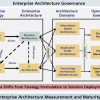Strategic advice to leverage new technologies
Technology is at the heart of nearly every enterprise, enabling new business models and strategies, and serving as the catalyst to industry convergence. Leveraging the right technology can improve business outcomes, providing intelligence and insights that help you make more informed and accurate decisions. From finding patterns in data through data science, to curating relevant insights with data analytics, to the predictive abilities and innumerable applications of AI, to solving challenging business problems with ML, NLP, and knowledge graphs, technology has brought decision-making to a more intelligent level. Keep pace with the technology trends, opportunities, applications, and real-world use cases that will move your organization closer to its transformation and business goals.
Recently Published
There is big data about Big Data. Every genre of publication (trade press, mainstream business media, newspapers, journals of science for scientists, and journals of science for nonscientists) has run or is running cover articles on Big Data.1 Each article opines about the game-changing and transformative impacts associated with Big Data.
With the rise of social media, the ubiquity of consumer technology, and the emergence of Big Data tools and cloud computing, 2012 will go down in history as the transition to a new way of computing for organizations.
Social media has -- in just a few short years -- become a major driver of operational and strategic decisions that cross-cut corporate awareness, brands, customer service, product development, reputation management, and, ultimately, business purpose. Social media impacts the top and bottom lines of all companies that sell and service anything.
There is big data about Big Data. Every genre of publication (trade press, mainstream business media, newspapers, journals of science for scientists, and journals of science for nonscientists) has run or is running cover articles on Big Data.1 Each article opines about the game-changing and transformative impacts associated with Big Data.
When it comes to making long-term predictions, most so-called experts fare no better than "dart-throwing monkeys." Or so Nobel prize-winning author Daniel Kahneman claimed in a recent interview1 about his best-selling book Thinking Fast and Slow.
Stating that the "cloud" will be a trend in 2012 is sort of like saying it's going to snow in Alaska. By the looks of the relentless marketing hype from everything that breathes and eats in IT vendor-land, one could argue we are enduring a cloud blizzard. Trend spotting this is not.
With the rise of social media, the ubiquity of consumer technology, and the emergence of Big Data tools and cloud computing, 2012 will go down in history as the transition to a new way of computing for organizations.
Establishing the Business Architecture Practice: A Case Study
Business and IT professionals are rapidly embracing business architecture (BA) as a mainstream concept to recognize their needs, goals, and vision for business transformation. However, establishing a comprehensive, pragmatic BA practice is still in its primitive stage.








